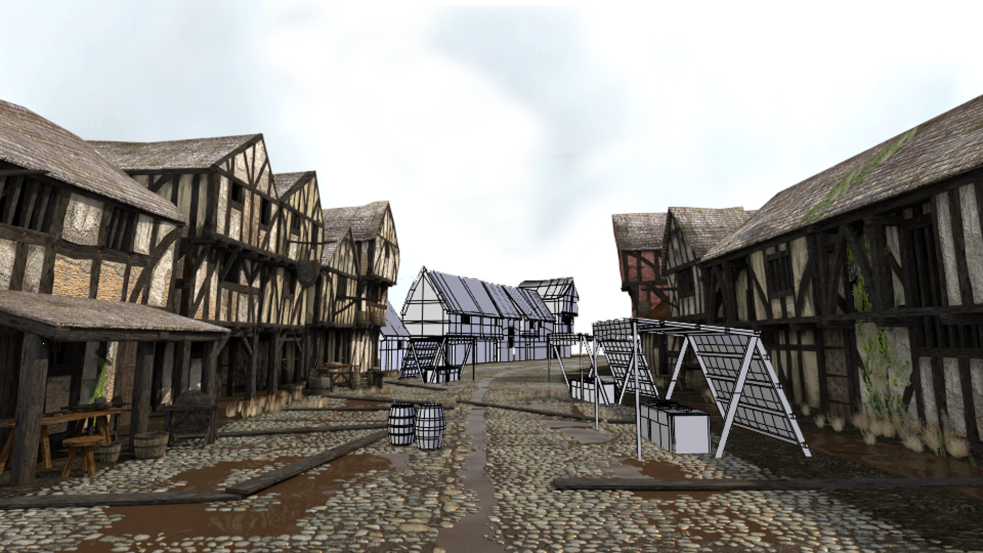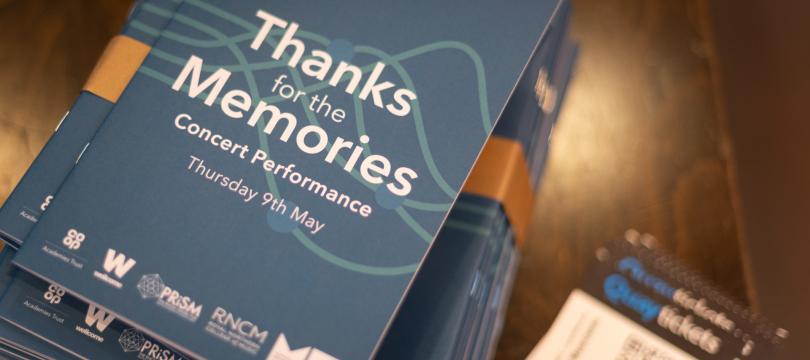City Witness: Exploring Medieval Swansea
Making the medieval history of Swansea come alive for residents and visitors through an interactive website.

Swansea was an important centre in the Middle Ages as a thriving port and a base for the Norman rulers of Wales. Yet the medieval legacy of Swansea is almost invisible today. Wartime bombs and subsequent re-development of the city have almost completely obscured traces of its medieval past. This project brings the medieval spirit of the city back to life using digital technologies built on multidisciplinary research and a strong partnership of universities, the council and local groups.
The challenge for the project team was to engage the local community when tangible heritage materials are distinctly lacking. Only castle ruins are the main visible signs of Swansea’s rich medieval heritage.
One way of bringing the history to life for the team was through manuscripts and the stories they told. A significant manuscript survived and is stored in the Vatican Library. It recounts how, in 1290, Welsh outlaw William Cragh was hanged in Swansea by the Anglo-Norman Lord. Cragh then miraculously came back to life – thanks to St Thomas of Hereford.
The team then used digital technologies from textual analysis, to mapping, to 3D reconstructions to gaming in order to engage the public with the research, the stories and hence the city’s ‘lost’ medieval past.
See the extensive website for more information and digital interactivity.
Project partners
The project was led by the University of Southampton in partnership with Queen’s University Belfast and King’s College London. Other partners included Swansea City Council and Glamorgan Gwent Archaeological Trust.
The main project team included:
- Principal Investigator / Project Director: Prof Catherine Clarke, University of Southampton
- Co-Investigator: Prof Keith Lilley, Queen’s University Belfast
- Co-Investigator: Paul Vetch, King’s College London
- Post-doctoral Research Fellow: Dr Harriett Webster, University of Southampton
- Post-doctoral Research Fellow: Dr Gareth Dean, Queen’s University Belfast
Advisory Committee
- Prof Daniel Power, Swansea University
- Neil Maylan, Glamorgan Gwent Archaeological Trust
- Richard Porch, City and County of Swansea
- Andrew Dulley, Assistant County Archivist, West Glamorgan Archive Service
Purpose
- To make Swansea’s medieval heritage accessible to local communities and visitors
- To contribute to the regeneration of the city centre and the development of tourism in the region
Background
The research team, led by Professor Catherine Clarke from Southampton University, had previously completed a project on medieval Chester with the idea of engaging members of the public with the city’s rich medieval heritage.
Swansea City Council approached the team with a similar idea, but with a lack of surviving tangible objects from the city’s past due to wartime bombing and re-development.
The challenge was to recreate the lost landscape of medieval Swansea using manuscripts, mapping and stories from the area.
The project worked closely with the city council which was developing plans to regenerate the ‘Castle Quarter’ of the site, which housed medieval ruins from the original castle – the only significant, surviving medieval building.
Approach
Having completed the Chester project the team had to adapt its approach radically faced with a lack of surviving medieval buildings in Swansea, plus there was no similar built heritage tourism.
The research team engaged with local partners such as Swansea Museum and Glamorgan Gwent Archaeological Trust. The partners were able to provide data, archaeological evidence and interpretation of that evidence to the researchers, who then in turn shared their findings.
A major exhibition was launched featuring medieval exhibits attracting 22,000 people. Members of the public were further engaged via a programme of events, including a mapping workshop, a medieval manuscript workshop and city tours. Local people also shared their own knowledge of the city, and the team, for example, discovered that the historic name of Wassail Square is still being used in postal addresses within a 1970s shopping centre in the city.
The team also saw, early on, how important digital technology was going to be in helping to explain and bring to life the city’s medieval heritage. It worked with a digital learning SME based in Brighton – Make Sense – to develop an online game.
And they recognised the clear need to develop resources in Welsh as well as English.
Evaluation
The team have found evidence that the medieval profile of the city is being raised as a result of all the activity from the project.
Evaluation was carried out by taking feedback from Swansea Museum and the city council, as well as from individuals attending the exhibition or the events.
Feedback from those taking part in events was positive – as it was from those feeding back via a blog on the website. People generally found the team’s expertise valuable in interpreting and contextualising artefacts.
Data from the website has shown around 65,000 visits and 35,000 unique users to the site (up to June 2016). The users come from across the world.
Findings from the evaluation show that the pavement marker trail guiding members of the public to key medieval locations and stories, plus the web site, are the two most prominent features of the project for them.
Anecdotal evidence of the heightened awareness of Swansea’s medieval past is seen when developers asked residents to name a new leisure and retail site and a large number of names suggested referenced its medieval past. ‘South Gates’ – based on the site’s location by the former South Gate area of the city, was finally selected.
Lessons learned
- Heritage can be communicated in compelling ways even when the tangible, surviving material is negligible;
- In developing appropriate digital tools…imagination, creativity and playfulness is important in engaging the public;
- This sense of playfulness can also play a crucial part in developing research hypotheses and ideas;
- Partner organisations can develop better ways of linking up collections and expertise.
Legacy
- The AHRC is funding development of a new heritage tourism route, inspired by the pilgrimage of William Cragh and Lord and Lady de Briouze from Swansea to Hereford Cathedral;
- The project continues to influence and inform council policy on heritage conservation and interpretation;
- The website is an interactive and engaging way to rediscover the medieval world of Swansea;
- Swansea is being linked into wider tourism networks, opening up economic benefits.
Contact
For further information, please see the project website or contact Professor Catherine Clarke.

